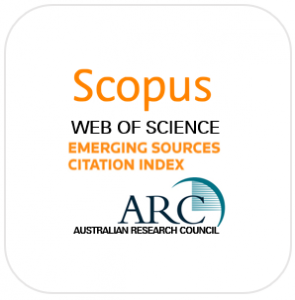EAST ASIA THRUST 2016-2018 | IJAPS CHINA RISING SERIES (ICRS)
The Phenomenon
The People’s Republic of China (PRC), once referred as Red China and commonly regarded as a threat to both its immediate neighbours and to the Western world consequent of the Cold War scenario, has long shed such negativity since the last quarter of the twentieth century. In the contemporary context China appears to be the place to be whether for a visitor or a tourist, a culture traveller, or for an entrepreneur, a manufacturer, a corporate executive, a banker, policy-makers of multinationals are all seriously looking towards the mainland of “a quarter of mankind” for profitable enterprises, business opportunities and/or expansive markets. An exodus of manufacturers from electronics to toys, fashion houses to sporting goods, and a host of other consumer items of present-day luxuries and consumables are moving house to tap the affordable Chinese labour pool.
China, an economic powerhouse that since the last decade had surpassed the recession stagnated Japanese economy, is currently in the second decade of the twenty-first century, only economy next in size and generating capacity than that of the United States. On the political arena, Beijing is fast assuming an active and increasingly pivotal role, wielding its presence at strategic intervals to maximise its colossal effect on world affairs. The current Chinese leaders of President Xi Jinping and Premier Li Keqiang are both popular from within and from without. Chinese diplomacy on the world stage in the last decade has been carefully nurtured and the present leadership with their own expertise in negotiations and cultivating relations with foreign counterparts is gaining support and friends for Beijing. Moreover China’s adoption of a non-quid pro quo principle in extending development aid and exporting expertise are favourable to most Asian and African nations hitherto not entirely tolerant of the paternalistic stance adopted by Western democracies when dispensing funds and technical assistance. The Confucian Institute, China’s equivalent to the British Council, is promoting, cultivating and spreading Chinese goodwill and cultural influences throughout the world consistent with Beijing’s stance in reaching out to friends across continents. The nouveau rich amongst the mainland Chinese and the liberal access to travel abroad witnessed hordes of them in Europe and North America, Southeast Asia, Australasia, and in neighbouring South Korea and Japan.
What then are the implications and the effects on the Asia Pacific region as a whole, and/or the impact of individual nation-states consequent of recent developments on the Chinese mainland? In exploring this phenomenon of China’s ascendancy it is prudent to examine and evaluate through a multidisciplinary prism, viz. adopting the approaches and perspectives of a host of academic disciplines: sociology, anthropology, history, political science, economics, the arts, media, conflict resolution, literature and language, education, tourism, international relations, and comparative religions. Tapping from the various disciplines would enable us to further understand issues and ascertain the challenges for the Asia Pacific realm with the rise of China. The ways to address the issues and overcome the challenges should be the crux of any scholarly paper.
AN INVITATION
In this connection the International Journal of Asia Pacific Studies (IJAPS) would like to extend an invitation to scholars from diverse disciplines to contribute a paper in their area of specialisation to this Series.
GUIDELINES
Individual Manuscript
Contributed manuscript should keep within the word count of between 8,000 and 10,000, inclusive of notes, references, appendices, illustrations, etc. Submitted manuscript should comprise an Abstract (max. 200 words) and Keywords (max. 5 words), and Text that has been prepared according to the prescribed journal house-style.
Aforesaid Invitation notwithstanding all submitted manuscripts will undergo the normal double-blind peer review process.
Guest Editor
In a themed issue (consisting a set of between 5 and 7 thematic papers), a Guest Editor (GE) will be identified and appointed by IJAPS. Potential GEs are to provide his/her curriculum vitae for perusal and approval by IJAPS Editor-in-Chief, together with biodata of identified contributors indicating ability/authority as author for their respective papers.
IJAPS Editorial Board represented by the Editor-in-Chief or an appointed representative (a member of the IJAPS Editorial Board) will work closely with the GE in the matter of the selection of reviewers, attending to the reviewers’ report (comments, recommendations, etc.), and take the decision for final approval. Once approved, GE will attend to the details of proofreading (1st reading) and to ensure the papers are formatted to IJAPS house-style. Two GEs are also possible. (Note: The candidate for GE needs to be a scholar of international standing in his/her field for it will lend immense credibility to the published papers and for IJAPS.)
All articles to be submitted by the GE for publication must have gone through peer review process which is coordinated by the GE. The GE is to keep record of the review report and submit them to the journal for record purpose.
The GE is to ensure that the selected contributors or a majority of contributors do not come from one single institution. Preferably, and if possible, contributors to come from various disciplines, a gender balance, institutions/universities, and countries/continents are much appreciated to reflect the diversity of scholarship.
DEADLINES
Interested Authors need to submit a draft Abstract (max. 200 words) and Keywords (max. 5 words). Only Authors of approved Abstracts should proceed with the manuscript.
Submitted manuscript should be forwarded in electronic format (Microsoft Word) within a window of 6 and 8 months following approval of Abstract. All submitted manuscripts shall go through a double blind peer review that might involve 2 or 3 reviewers, revisions, re-evaluation, etc., a lengthy process.
Currently, we are accepting abstracts.
INQUIRIES
For queries, please refer to:
Professor Ann Heylen (aheylen2[at]gmail.com)
National Taiwan Normal University, Taiwan

